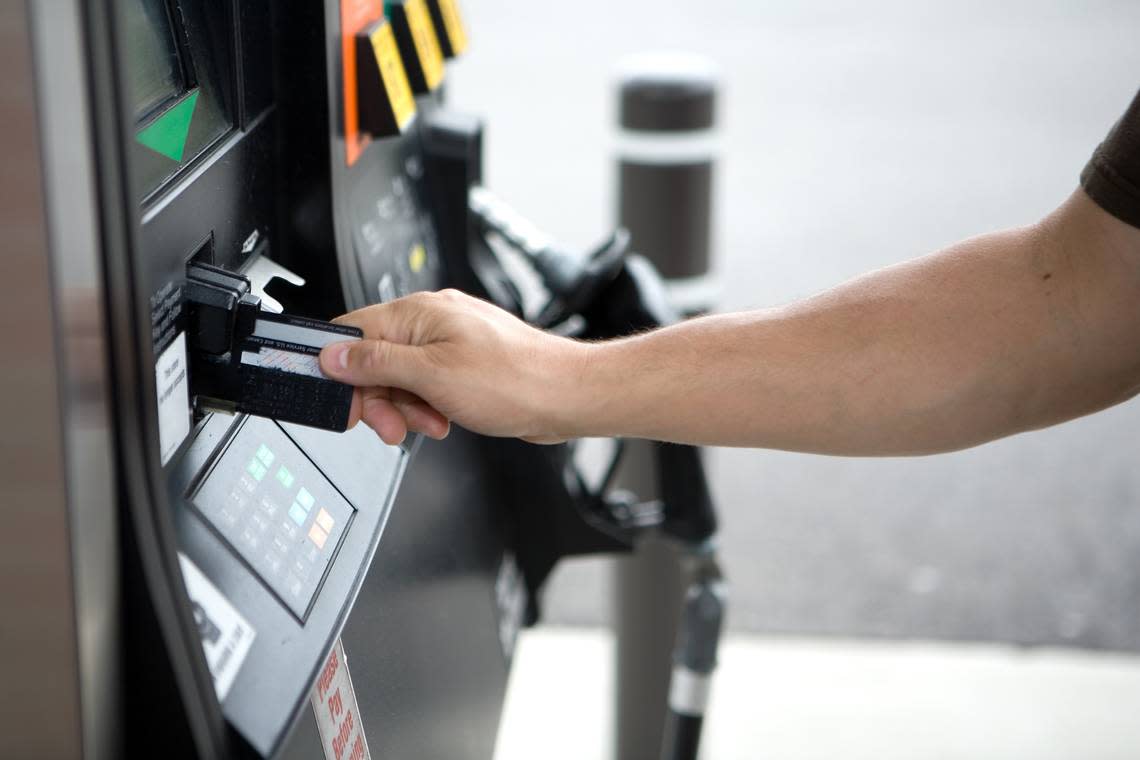California gas prices could drop a dollar per gallon, expert says. Here’s when and why

Yes, gasoline prices in California — which have been nearly a dollar per gallon higher than in any other state — should come down soon and fast.
“It’s going to end rather quickly,” Patrick De Haan, head of petroleum analysis for GasBuddy, which tracks price trends, told The Bee.
California regular gasoline prices have been flirting with $6 per gallon, but De Haan posted on X, previously known as Twitter, last week that “California will easily fall $1/gal by Thanksgiving,”
The fix could be temporary, because California is subject to several factors unique to the state. Its summer blend gasoline, designed to meet tough environmental standards, is more costly. Refinery shutdowns, which tend to be routine, disrupt supplies and it’s difficult to find ways to replace their products.
And the war between Israel and Hamas could have a ripple effect on oil prices, which jumped Monday.
For now, the price relief could last a while, as refineries engage in robust production and political and economic pressure promise to keep prices stable, said Sanjay Varshney, professor of finance at Sacramento State.
“We have an election year next year and one way pushing the economy into a recession is having gas and oil continue to trade higher,” he said.
And, De Haan posted Monday, “the down trend will continue this week, even if oil rallies due to the attacks on Israel..”
While OPEC Plus, which includes Saudi Arabia and its allies, has been limiting supply, oil producers could soon be motivated to lower or stabilize prices, he said, as slower growing economies mean less demand.
Gasoline prices in California averaged $5.80 for a gallon of regular gasoline Monday. While that’s down from $6.06 a week ago, it’s up from last month’s $5.41, and is the highest price in the nation.
Next is Washington state at $5.02. The national average is $3.70.
A major culprit has been the summer blend gasoline, which is more costly to produce. Around this time of year, refineries begin producing the winter blend, which is usually less expensive.
The northern part of the state tends to switch to the winter blend around Oct. 1, while Southern California makes the transition at the beginning of November.
Gov. Gavin Newsom on Sept. 27 directed the state Air Resources Board to “take whatever steps are necessary to allow for an early transition to winter-blend gasoline to be manufactured, imported, distributed, and sold in California.”
He said the change “could quickly increase fuel supply and provide critical liquidity on the spot market, and act as a much-needed safety valve.”
Supply and demand
Experts also saw supply become more in line with demand.
“My thinking is there’s only so much Saudi Arabia and OPEC can squeeze the rest of the world before it hurts them,” Varshney said. Those countries made voluntary cuts in production through the end of the year.
Oil prices peaked at the end of September at about $93 a barrel, and have since dropped to roughly $82 a barrel because of concern about lower demand.
Refinery maintenance has also affected California prices. Because of the state’s environmental requirements, and its location far from Gulf Coast refineries, any shutdown for maintenance tends to have serious consequences. And refineries back in operation could help push prices down.
Any timetable is difficult to predict, said Gokce Soydemir, Foster Farms endowed professor of business economics at California State University, Stanislaus.
“It would depend on how long the refinery turnaround would take, from a few weeks to a few months,” he said.
De Haan was more upbeat.
“You could say Christmas is coming early: California should quickly see prices fall back below $6, and once all refinery snags are addressed and maintenance complete, I would not be surprised to see prices even fall below $5 there later this year,” he wrote on his blog.
California refineries produce a cleaner product that meets state environmental regulations. That means the state’s refineries operate at or near full capacity because of strong demand and a lack of interstate pipelines that could bring products into California.
“Refineries in the state often operate at or near maximum capacity because of the high demand for those petroleum products and the lack of interstate pipelines that can deliver those cleaner fuels into the state,” said an analysis earlier this year by the federal Energy Information Administration.
“When unplanned refinery outages occur, the lack of … deliveries available from interstate pipelines means replacement supplies of (California gasoline) come in by marine tanker from out-of-state U.S. refineries or from other countries. It can take several weeks to find and bring replacement motor gasoline from overseas that meets California’s unique specifications.”
De Haan was concerned that even if prices fall this winter, the same spikes could reoccur next year.
California, he said, needs to get together with other Western states so they can produce the same sort of products.
“There are all these little pools” of refineries producing different blends, he said. “It’s a complex, maddening situation.”

